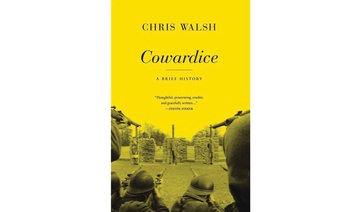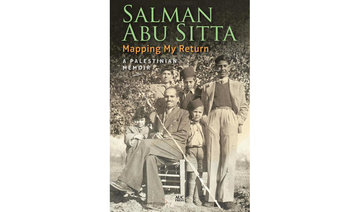The end of the World War I marked the end of the Ottoman Empire and the emergence of new countries. Lebanon and Syria were both created by France in the 1920s. These arbitrary boundaries, which opened a new chapter in the region, have been at the center of conflicts ever since. The Civil War that began in Lebanon in 1975 and lasted 15 years caused the deaths of 120,000 people.
Syria has also been devastated by a bloody war in which Europe was conspicuous by its absence. At a time when many Arab countries are divided by political and sectarian passions, a lot of discussion focuses on the Great War’s partition plans. In a timely and meticulously researched book, Eugene Rogan sheds light on the neglected Middle-Eastern theater of World War I.
“The Fall of the Ottomans – The Great War in the Middle East 1914-1920” fills a void. Very little is known about the Turkish and Arab experiences of the Great War and its centenary also attracted little attention in the Middle East. Yet battles were fought in Egypt, Yemen, Saudi Arabia, Jordan and Palestinian territories, Syria, Lebanon, Iraq, Turkey and Iran. It was these battlefields stretching from Turkey to Iran, across the Arab provinces, and across North Africa that dragged the Middle East into the war and ultimately redesigned the map of the entire region.
When the Ottoman Empire called for a Holy War on Nov. 14, 1914, it was already described as crumbling. During the 16th and 17th centuries, the Ottomans began losing wars to the Russian Empire of Catherine the Great and to the Habsburg emperors. By the early 19th century, the Ottomans lost Greece, Romania, Serbia and Montenegro, which became independent and Bosnia, Herzegovina and Bulgaria became autonomous. Then between 1878 and 1882, Britain took over Cyprus and Egypt, Russia annexed three provinces in the Ottoman Caucasus in 1878 and finally, France occupied Tunisia in 1881.
As the news of the war reached the rest of the world, the Ottomans were hoping that Arabs and Turks within the empire would respond favorably to the Sultan’s call for a holy war. In 1914, the greatest number of Muslims lived under colonial rule: 100 million under British rule, 20 Million in French colonies and another 20 million within the Russian Empire. It now remained to be seen if the Sultan’s call for Jihad against Britain, France and Russia would affect Muslim loyalties toward the Entente.
Rogan has used Turkish and Arabic sources that tell the story through Ottoman eyes. In a diary, that belonged to a Muslim cleric from the southern Lebanese village of Nabatiyye, one can read how the people reacted on Aug. 3, 1914. These few lines captures admirably the shock and consternation felt across the Ottoman Empire:
“The people were deeply troubled and agitated by the news (of general mobilization). They gathered in small groups in public spaces, astonished and bewildered, as if confronting the Day of Judgment. Some wanted to flee but where would they go? Others wanted to escape, but there was no way out. Then we heard that war had broken out between Germany and Austria on one side, and the Allies on the other side. This only increased the fear and alarm of the outbreak of a murderous war that would devour the cultivated lands and the dry earth.”
According to the author, the diaries and memoirs of Turkish soldiers and low-ranking officers are the most original contribution that the book offers to Western readers.
In an interview he gave to the Hurriyet Daily News, Rogan said that:
“What is really striking is how common the experiences of that horrible conflict was to all sides. It shouldn’t surprise us, but they all experienced the industrial warfare of the Great War in very similar ways. They suffered the same discomforts, and unhealthy conditions in the trenches, they suffered equally from what we would call shellshock, or traumatic stress disorders that are associated with relentless warfare … The Britons assumed they would be fighting on the Western Front, while the Ottomans had never anticipated making war against Great Britain. So they had no predisposition to hate each other. When the trenches got close to each other … they would exchange greetings or jokes … they would even throw things to each other out of kindness – a Turk would throw a pack of cigarettes or a Tommy would throw a pot of jam. One Turkish diarist comments on how nobody ever took the opportunity to mix dirt in with the jam, and nobody followed up a pack of cigarettes with a hand grenade. They threw gifts to each other’s lines in genuine acts of comradery. Such examples leap out as extraordinary human exchanges in the monstrous machine of war.”
One of the most interesting chapters deals with the Arab revolt and particularly the role played by Sharif Husayn, who was emir of Makkah. The British and the Turks were both searching for an alliance with Sharif Husayn. When the latter learned of the Young Turks’ plan to murder him, he turned toward Britain. But the very lands that Sharif Husayn was negotiating with the British were also at the center of secret discussions between France and Britain. On June 10, 1916, the Hashemites led by Sharif Husayn entered the war against the Turks. A few months later, with the help of his sons — Ali, Abdullah, Faysal and Zayd — had won over Makkah, Taif, as well as Jeddah, Rabigh and Yanbu. Then in the beginning of December, the military situation tilted toward the Ottoman forces. They had won several battles. Capt. T.E. Lawrence believed that Hashemite forces were about to lose but on Dec. 11, 1916, the Ottoman army that reached the outskirts of Yanbu was in a very bad shape. Although they were in a position to chase the Arab forces, they could not deal with the Royal Navy. “So, they turned back. And that night, I believe, the Turks had lost their war.”
A year later, on the Dec. 9, 1917, 401 years of Ottoman rule in Jerusalem had come to an end. The Ottomans had also lost control over three cities: Makkah, Baghdad and Jerusalem. The war ended on Nov. 11, 1918, and the Turkish Grand National Assembly abolished the Ottoman sultanate on Nov. 1, 1922.
The Hashemite claims to Greater Syria collided with French demands and they surrendered Madinah in December 1925. Sharif Husayn had every reason to feel bitter. He had been betrayed by secret negotiations that took place all along.
“These outlandish agreements, which were only conceivable in wartime, were concluded solely to advance Britain and France’s imperial expansion. Had the European powers been concerned with establishing a stable Middle East, one can’t help but think they would have gone about drafting the boundaries in a very different way,” concludes Eugene Rogan.
This masterful account of World War I opens up a window to vital chapters in the history of the Great War. The extensive Turkish and Arabic sources, used mostly for the first time, bring events alive and contribute to highlight the little known viewpoint of the Ottoman Empire. Magnificent, captivating and easy to read, “The Fall of the Ottomans” is in a league of its own.
• [email protected]
Book Review: Roots of today’s Middle East chaos found on the battlefields of World War I
Book Review: Roots of today’s Middle East chaos found on the battlefields of World War I

What We Are Reading Today: Out of One, Many

Author: Jennifer T. Roberts
Covering the whole of the ancient Greek experience from its beginnings late in the third millennium BCE to the Roman conquest in 30 BCE, “Out of One, Many” is an accessible and lively introduction to the Greeks and their ways of living and thinking. In this fresh and witty exploration of the thought, culture, society, and history of the Greeks, Jennifer Roberts traces not only the common values that united them across the seas and the centuries, but also the enormous diversity in their ideas and beliefs.
Examining the huge importance to the Greeks of religion, mythology, the Homeric epics, tragic and comic drama, philosophy, and the city-state, the book offers shifting perspectives on an extraordinary and astonishingly creative people.
Century after century, in one medium after another, the Greeks addressed big questions, many of which are still very much with us, from whether gods exist and what happens after we die to what political system is best and how we can know what is real. Yet for all their virtues, Greek men set themselves apart from women and foreigners and profited from the unpaid labor of enslaved workers, and the book also looks at the mixed legacy of the ancient Greeks today.
The result is a rich, wide-ranging, and compelling history of a fascinating and profoundly influential culture in all its complexity—and the myriad ways, good and bad, it continues to shape us today.
What We Are Reading Today: ‘If Cats Disappeared from the World’

- Beautifully written and emotionally moving, it is also a testament to the power of storytelling and reminds people of the deep impact of making personal choices and connections
Author: Genki Kawamura
“If Cats Disappeared from the World” is a novel written by Japanese author Genki Kawamura. The book was published in 2012 and was rated 4/5 by over 75,000 readers worldwide.
Kawamura is a worldwide bestselling author. “If Cats Disappeared from the World” was his first novel, which sold over 1 million copies in Japan and was translated into over 14 languages.
In this novel, Kawamura tells the story of a postman who is diagnosed with an uncurable illness. However, when he accepts his destiny, the Devil appears to him with an unusual proposal. The postman must choose one thing to eliminate from this world for him to live one more day. During his journey, the postman then starts examining the true value of everything he owns.
Kawamura’s writing style is simple yet evocative, inviting readers to dive deep into the layers of their own emotional journey with every page. The narrative provides a delicate balance between moments of happiness and sorrow, using cats as a symbol of companionship and joy.
Moreover, the book allows readers to reflect on the value of relationships and experiences. It raises questions regarding the decisions people make, the legacies they leave behind, and the core meaning of everyday moments, which eventually shape people’s characters and how they think.
The novel encourages people to take a deep breath and reflect on the blessings people have, yet neglect, due to their busy lives.
With Kawamura’s thoughtful message and memorable characters, this novel is a compelling exploration of the human experience, providing comfort and inspiration, and a new appreciation for the beauty and brevity of life.
Beautifully written and emotionally moving, it is also a testament to the power of storytelling and reminds people of the deep impact of making personal choices and connections.
What We Are Reading Today: ‘Chinese Espresso’ by Grazia Ting Deng

Italians regard espresso as a quintessentially Italian cultural product—so much so that Italy has applied to add Italian espresso to UNESCO’s official list of intangible heritages of humanity. In this book, Grazia Ting Deng explores the paradox of “Chinese Espresso”— the fact that this most distinctive Italian social and cultural tradition is being preserved by Chinese immigrants and their racially diverse clientele.
What We Are Reading Today: ‘Bartleby and Me’

Writers love to write about writing and none seemingly more so than Gay Talese, the journalist known as a pioneer of the American literary moment called “New Journalism.” This style of writing originated in the 1960s and ‘70s and combines journalistic research with creative non-fiction.
Talese started his career as an obituary writer at the New York Times and, later, as a magazine writer who ended up reluctantly penning the most widely read magazine articles of all time. He showcases some of that editorial wisdom — and reporting mishaps — in his 2023 book, “Bartley and Me: Reflections of an Old Scrivener.”
Now 92 years old, he writes vividly about his early reporting days and the stories behind the stories; he masterfully weaves in stray strands that somehow come together into a coherent narrative. Talese writes crisp copy. He writes about nobodies and somebodies with equal fervor.
He recalls his time as a young reporter on assignment where, at the insistence of his persistent editor, he attempted to sit down for an interview with the elusive and super-famous star Frank Sinatra. Talese recounts how he repeatedly tried — and failed — to pin down “Ol’ Blue Eyes” while chasing him around California in the 1960s. He eventually published his distinctively titled profile, “Frank Sinatra Has a Cold,” in the April 1966 issue of Esquire. That piece of writing is considered one of the most celebrated pieces of magazine journalism to date.
Talese’s tales are mostly centered around his time in New York. He recalls things in meticulous detail — for example, pointing out the exact address and precise building within a neighborhood to help the reader visualize the space. The city is always a leading part of the story.
“New York is a city of things unnoticed,” he wrote 60 years ago, something that could easily be written today. He recalls the early days of his journalistic career in New York, churning out newspaper copy and still, now, being ever-so-curious about everything. The pages of this book show that we all, alongside him, still have much more to notice.
The title of the book was inspired by American author Herman Melville’s short story, “Bartleby, the Scrivener: A Story of Wall Street,” published in the 1800s. This is a social criticism piece about a lawyer who hires a peculiar scrivener or clerk, Bartleby, and the adventures (or misadventures) that ensue.
In his version, Talese shares with us a fresh piece of original reporting titled “Dr. Bartha’s Brownstone,” which is his version of “Bartleby.” This time, however, Bartleby is an unknown doctor who makes his bombastic mark on the city one random summer day. It is a brilliant piece of journalism about journalism.
What We Are Reading Today: ‘The Proof Stage’ by Stephen Abbott

The discovery of alternate geometries, paradoxes of the infinite, incompleteness, and chaos theory revealed that, despite its reputation for certainty, mathematical truth is not immutable, perfect, or even perfectible.
Beginning in the last century, a handful of adventurous playwrights took inspiration from the fractures of modern mathematics to expand their own artistic boundaries.




















